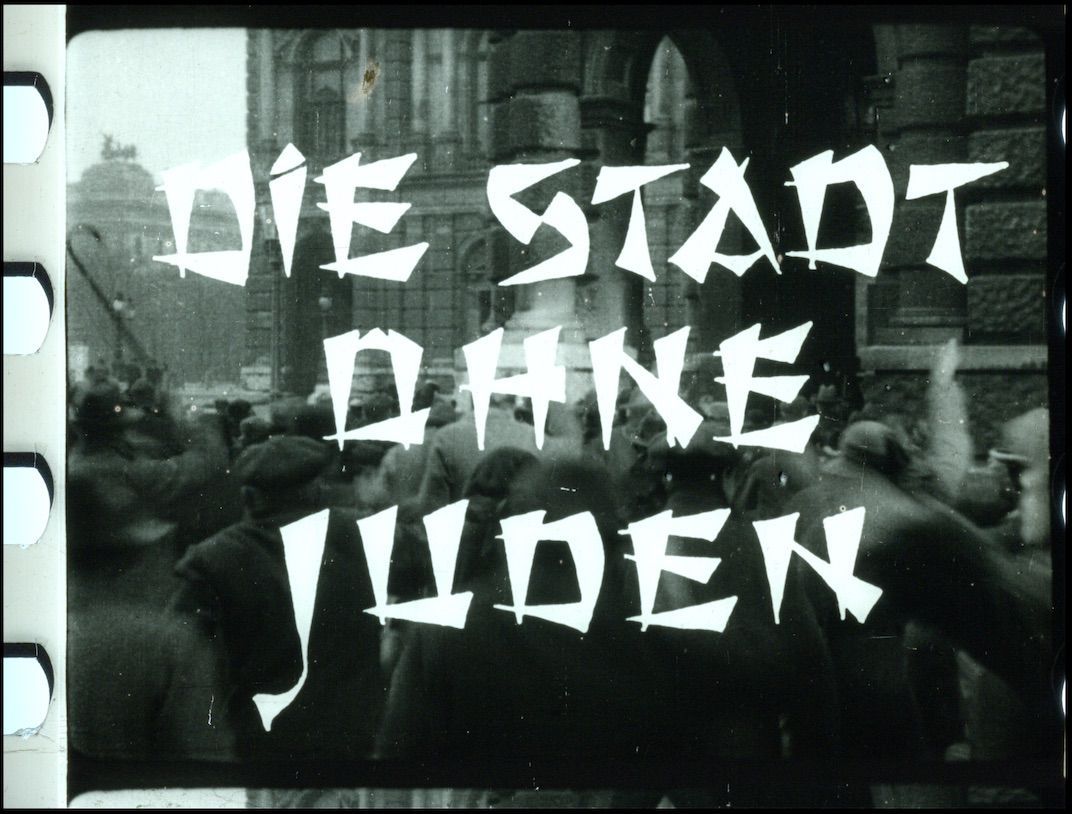The recently restored Austrian silent film Die Stadt Ohne Juden details a dystopian narrative in which Jews are harassed, physically assaulted and forced out of the country by train.
The City Without Jews, as the title translates in English, was made during the interwar period by filmmaker H.K. Breslauer and screenwriter Ida Jenbach. A satire on antisemitism, it was based on a book by the same name by the journalist and writer Hugo Bettauer.
The reception was warm when the film premiered in 1924 in Vienna’s major movie theaters, as Sarah Rose Sharp reports for Hyperallergic, but within a year of its release, the political right had launched a hate campaign against Bettauer.
“His private address was published and in the newspapers, it was explicitly said that such a person shouldn’t be part of society,” Nikolaus Wostry, director of collections at the Filmarchiv Austria, tells Bethany Bell for BBC News.
Bettauer was killed by a follower of the Nazi Party in 1925. The original footage of the film, meanwhile, was lost during World War II.
Decades later, in 1991, archivists at the Dutch film museum found a version of the film, but it had been heavily censored. Then, in 2015, a collector at a flea market in Paris struck gold with a complete copy.
According to Sharp, the restoration of the newly found film was made possible thanks to a crowdfunding campaign by Filmarchiv Austria (Austrian Film Archive). Saved from decay, the lost film is now being screened as part of an exhibition called Die Stadt Ohne at the institute, which will run through December 30, 2018.
Larissa Bainschab, a press officer of Filmarchiv Austria, tells Sharp that the newly found copy includes a lost ending, as well as other sequences that had been destroyed.
“Previously unknown images show Jewish life in Vienna and attacks against them,” she says, adding, “The expressionist scene featuring Hans Moser [one of Austria’s most noted movie stars at the time] in the role of a ruthless anti-Semite is now available in its entirety for the first time.”
In addition to the film, the exhibition also includes other historic and present-day materials that examine the persecution of Jews during the Holocaust and connect their experiences to the present-day. “In the 1920s and 1930s, the anti-Semites called for the exclusion of “the Jews”,” the exhibition writes, “today they agitate again: against “the foreigners”, Muslims or refugees.”
According to Wostry, Die Stadt Ohne Juden is “one of the strongest anti-Nazi-statements of the silent film period.” But the film also carries an optimistic ending. Life worsens for the city after the Jews were exiled from Vienna, so the chancellor eventually invites them back to the city to joyous reunions. In real life, the Nazis would go on to kill more than 6 million Jews in the Holocaust.
Julissa Treviño is a writer and journalist based in Texas. She has written for Columbia Journalism Review, BBC Future, The Dallas Morning News, Racked, CityLab and Pacific Standard.



























The Jews were warned many time before WWII that a great catastrophe is nearing and they should pack up and leave Europe. They chose to ignore.
Now the situation is even worse in Eurabia and Jews are warned once again to pack up and leave before it’s too late.
First time Jews were fooled, now you cannot claim you had no knowledge!
Leave while you still can.